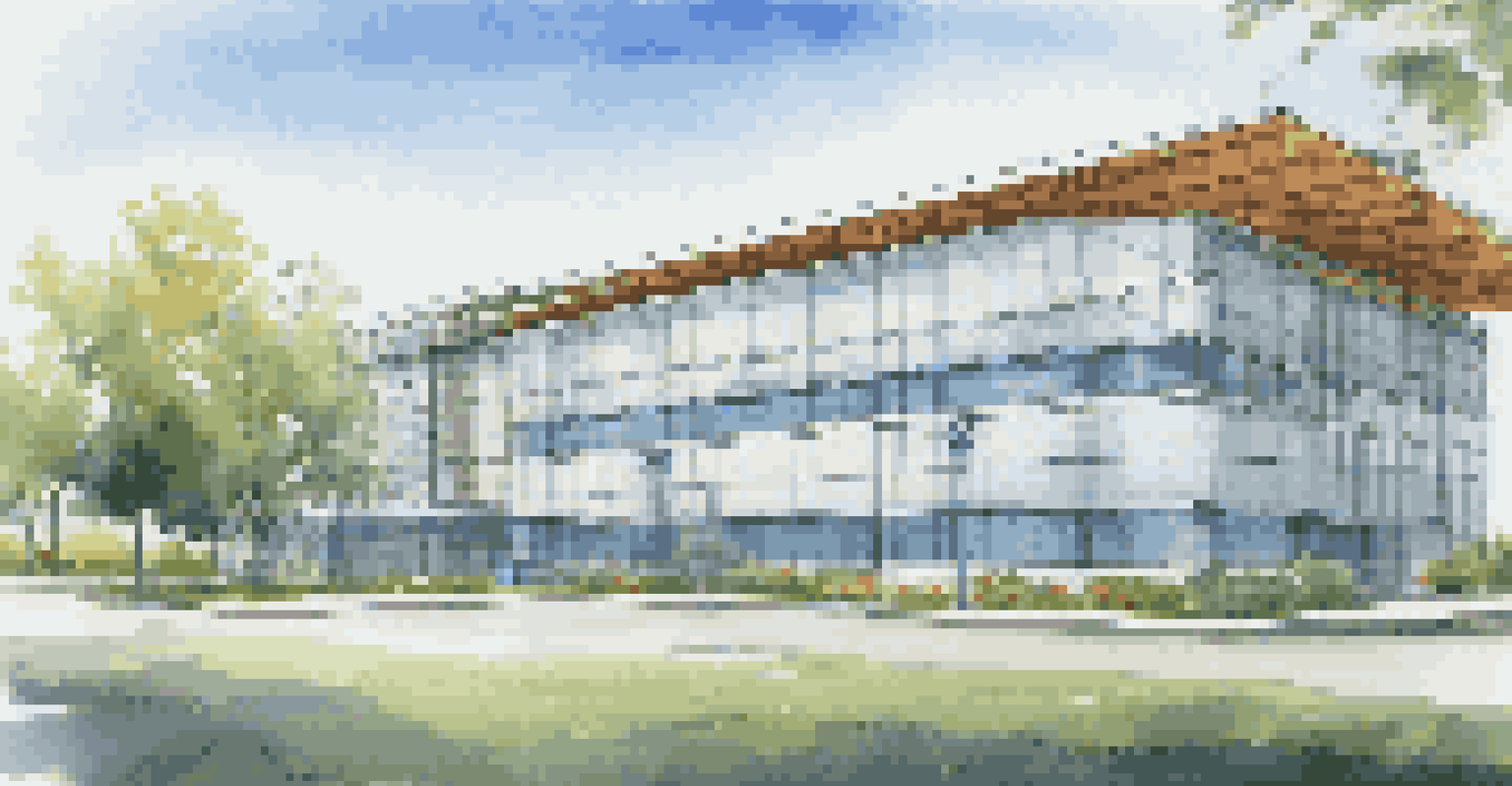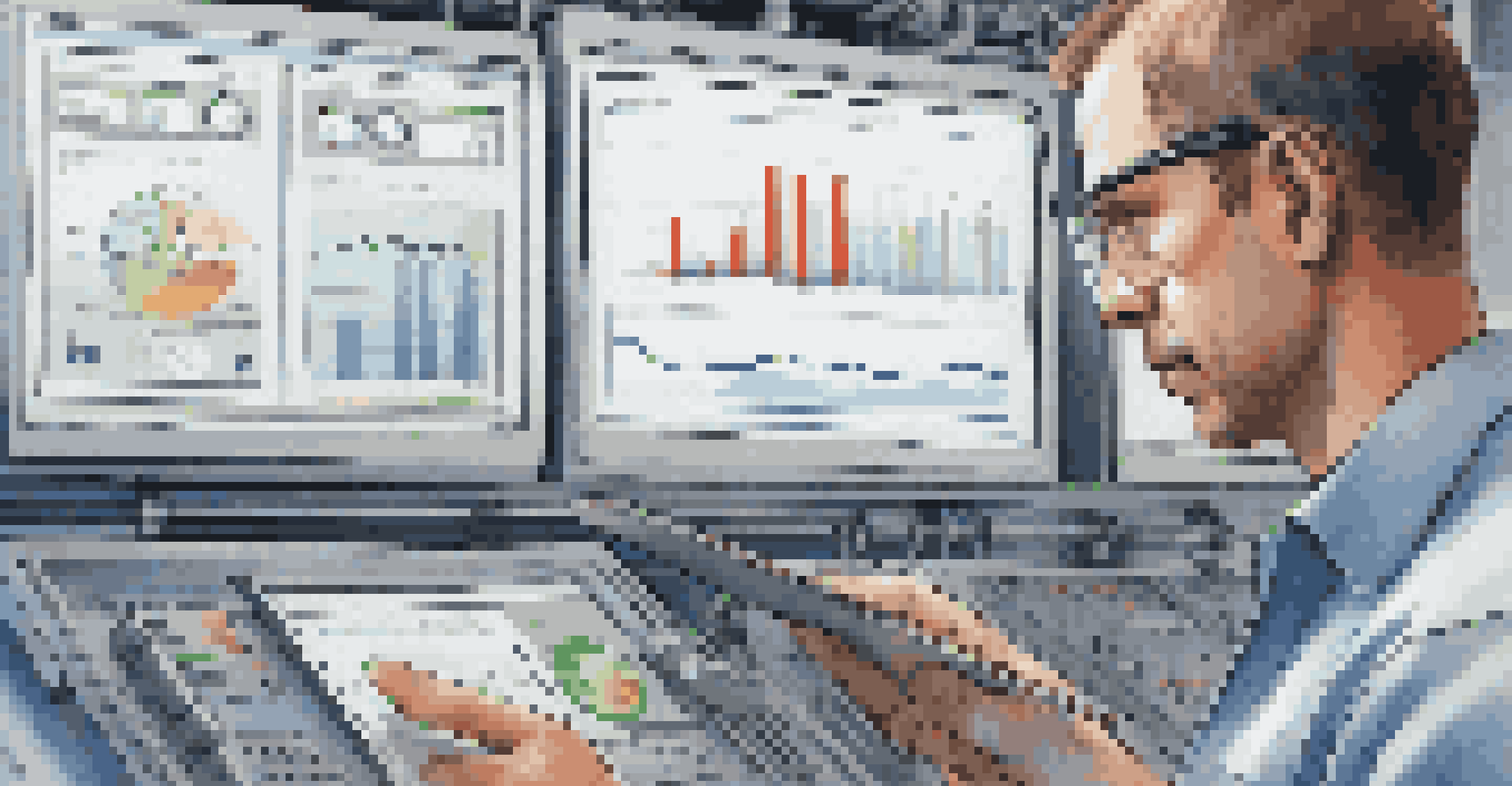Remote Monitoring for HVAC Systems: Benefits and Trends

Understanding Remote Monitoring for HVAC Systems
Remote monitoring for HVAC systems involves using technology to track and manage heating, ventilation, and air conditioning systems from a distance. This means that building managers can access system data in real-time, allowing for proactive maintenance and management. Essentially, it transforms traditional HVAC oversight into a more efficient, data-driven process.
The future is already here – it's just not very evenly distributed.
Imagine having the ability to check your home’s temperature or humidity levels while lounging at a coffee shop. That’s what remote monitoring offers for HVAC systems, providing peace of mind and enhanced control. By utilizing sensors and software, facility managers can monitor performance metrics without needing to be physically present at the site.
As buildings become smarter, the integration of remote monitoring into HVAC systems is not just a luxury but a necessity. It’s about leveraging technology to enhance comfort, efficiency, and sustainability in our indoor environments.
Key Benefits of Remote Monitoring for HVAC Systems
One of the primary benefits of remote monitoring is increased energy efficiency. By analyzing data from HVAC systems, managers can identify inefficiencies and make necessary adjustments, which can lead to significant cost savings on energy bills. For instance, if a system is running when it shouldn't be, remote alerts can help address the issue immediately.

Another advantage is improved reliability. With continuous monitoring, any potential issues can be detected and addressed before they escalate into major problems. This proactive approach not only minimizes downtime but also extends the lifespan of the HVAC equipment, similar to how regular check-ups keep your car running smoothly.
Boosting Efficiency with Remote Monitoring
Remote monitoring significantly enhances energy efficiency by allowing for real-time data analysis and immediate adjustments.
Furthermore, remote monitoring enhances comfort for occupants. By ensuring that temperature and air quality are consistently regulated, businesses can create a more pleasant environment for employees and customers alike, ultimately contributing to overall satisfaction and productivity.
Emerging Trends in HVAC Remote Monitoring Technology
The landscape of remote monitoring for HVAC systems is evolving rapidly, with IoT (Internet of Things) technology leading the charge. IoT devices allow for seamless communication between HVAC systems and management software, enabling real-time data collection and analysis. This connectivity is akin to having a smart home, but for commercial buildings.
Data is the new oil.
Artificial Intelligence (AI) is also making waves in HVAC monitoring. By utilizing machine learning algorithms, AI can predict equipment failures and optimize performance based on historical data. This predictive maintenance approach not only saves money but also enhances system reliability, much like how your smartphone predicts your next move based on usage patterns.
Additionally, mobile applications are becoming increasingly popular, allowing facility managers to monitor systems from anywhere. This trend mirrors our everyday reliance on apps for convenience, as users can receive alerts, adjust settings, and access reports all from their smartphones, making HVAC management more accessible than ever.
Challenges of Implementing Remote Monitoring for HVAC
While the benefits are clear, there are challenges to implementing remote monitoring for HVAC systems. One major hurdle is the initial cost of upgrading existing systems to be compatible with remote monitoring technologies. For many businesses, the investment may seem daunting, but the long-term savings often justify the expense.
Data security is another concern that cannot be overlooked. With increased connectivity comes the potential for cyber threats, and protecting sensitive information is crucial. Companies must ensure that their remote monitoring solutions come with robust security measures to safeguard against potential breaches.
Proactive Maintenance Prevents Issues
Continuous monitoring helps detect potential HVAC problems early, minimizing downtime and extending equipment lifespan.
Lastly, a lack of technical know-how can be a barrier for some organizations. Training staff to use new technologies effectively is essential for maximizing the benefits of remote monitoring, similar to how learning to use a new piece of software can enhance productivity in any workplace.
The Role of Data Analytics in HVAC Monitoring
Data analytics plays a pivotal role in enhancing the effectiveness of remote monitoring for HVAC systems. By analyzing large volumes of data collected from sensors, organizations can identify patterns and make informed decisions. This analytical approach transforms raw data into actionable insights, much like a detective piecing together clues to solve a mystery.
For example, data analytics can reveal trends in energy usage, helping managers understand peak times and adjust settings accordingly. This not only improves efficiency but also contributes to sustainability efforts, as organizations seek to reduce their carbon footprint. It’s a win-win situation for both the environment and the bottom line.
Moreover, advanced analytics can facilitate benchmarking against industry standards, enabling businesses to measure their performance relative to others. This competitive edge can drive continuous improvement, ensuring HVAC systems operate at their best while meeting regulatory requirements.
Future Outlook for Remote Monitoring in HVAC Systems
The future of remote monitoring for HVAC systems looks promising, with continuous advancements in technology paving the way for even more innovative solutions. As smart buildings become the norm, the integration of advanced monitoring systems will only become more prevalent. This evolution will likely lead to enhanced energy efficiency and occupant comfort, creating healthier environments.
Sustainability will also play a crucial role in shaping the future of HVAC remote monitoring. As businesses increasingly prioritize eco-friendly practices, monitoring systems will be designed to optimize energy usage and reduce waste. Think of it as a green revolution in building management, where technology and sustainability go hand in hand.
Data Analytics Drives Informed Decisions
Leveraging data analytics transforms raw information into actionable insights, helping businesses optimize HVAC performance and sustainability.
Ultimately, the ongoing development of remote monitoring technologies will empower businesses to take control of their HVAC systems like never before. As we embrace this future, organizations will not only save money but also contribute to a more sustainable world, ensuring a comfortable experience for all.
Conclusion: Embracing Remote Monitoring for HVAC Success
In conclusion, remote monitoring for HVAC systems offers numerous benefits that can significantly enhance efficiency, reliability, and occupant comfort. As technology continues to advance, it’s essential for businesses to consider integrating these solutions into their operations. The investment may be substantial, but the potential returns—both financially and environmentally—are well worth it.
By embracing remote monitoring, organizations can stay ahead of the curve, leveraging data analytics and IoT technology to optimize performance and reduce costs. It’s about transforming the way we manage HVAC systems, making them smarter and more responsive to our needs.

As we look to the future, the trend toward remote monitoring will only grow stronger. For businesses seeking to thrive in an increasingly competitive landscape, adopting these technologies will be key to ensuring HVAC systems operate at their best, providing a comfortable and efficient environment for everyone.